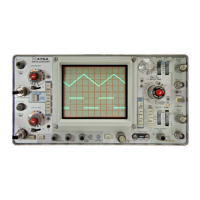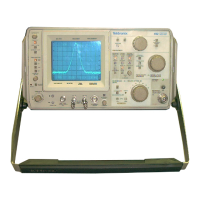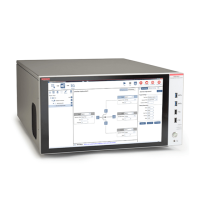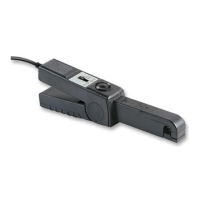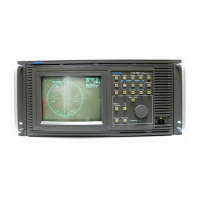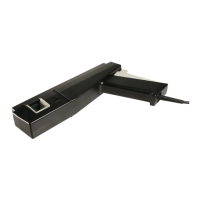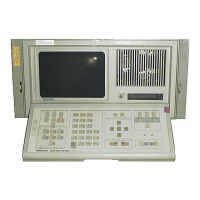5.
Measure
the horizontal deflection
of
the unknown
signal
in divisions
and
calculate its time duration
using the following formula:
Time
Duration
Arbitrary
Deflection
Factor
X
horizontal
deflection
(divisions)
6. Frequency
of
the unknown
signal
can
then
be
determined by calculating the reciprocal
of
its time
duration.
EXAMPLE: The reference
signal
time duration
is
2.19
milliseconds
(2.19X10-
3
seconds), with a
TIME/DIV
switch setting
of
0.2
ms
and
the VAR
TIME/DIV
control
adjusted
to
provide a horizontal deflection
of
exactly eight
divisions.
Substituting
these
values
in the horizontal conversion
factor formula:
Horizontal
Conversion
Factor
2.19
ms
8 divisions X 0.2 ms/divisions
1.37
For the unknown signal, the
TIME/DIV
switch setting
is
50
JlS,
and
one
complete cycle
spans
seven
horizontal
divisions. The arbitrary deflection factor
is
then determined
by substituting
values
in the formula:
Arbitrary
Deflection = 1.37 X 50 JlS/division = 68.5 JlS/division
Factor
The time duration
of
the unknown
signal
can
then be
computed by substituting
values
in the formula:
Time
. = 68.5 jls/division X 7 divisions = 480
JlS
Duratron
The frequency
of
the unknown
signal
is
then calculated:
Frequency =
480JlS
=2.083
kHz
PHASE DIFFERENCE
1.
Obtain a Normal
Sweep
Display (refer
to
Basic
Oscilloscope Displays section
of
this manual).
2. Using probes or coaxial
cables
with equal time delays,
connect a known reference
signal
to
one
channel
input
and
the unknown
signal
to
the other channel
input.
3.
Depress
the
CH
1
and
CH
2
VERT
MODE
push
buttons.
Use
either
CHOP
(in)
or
AL
T (out) VERT
MODE switch depending on the
input
frequencies.
In general,
ALT
is
best
for
high-frequency
signals
and
52
4658/DM44
Operators
@
I
I
I
I
I
I
I
I
I

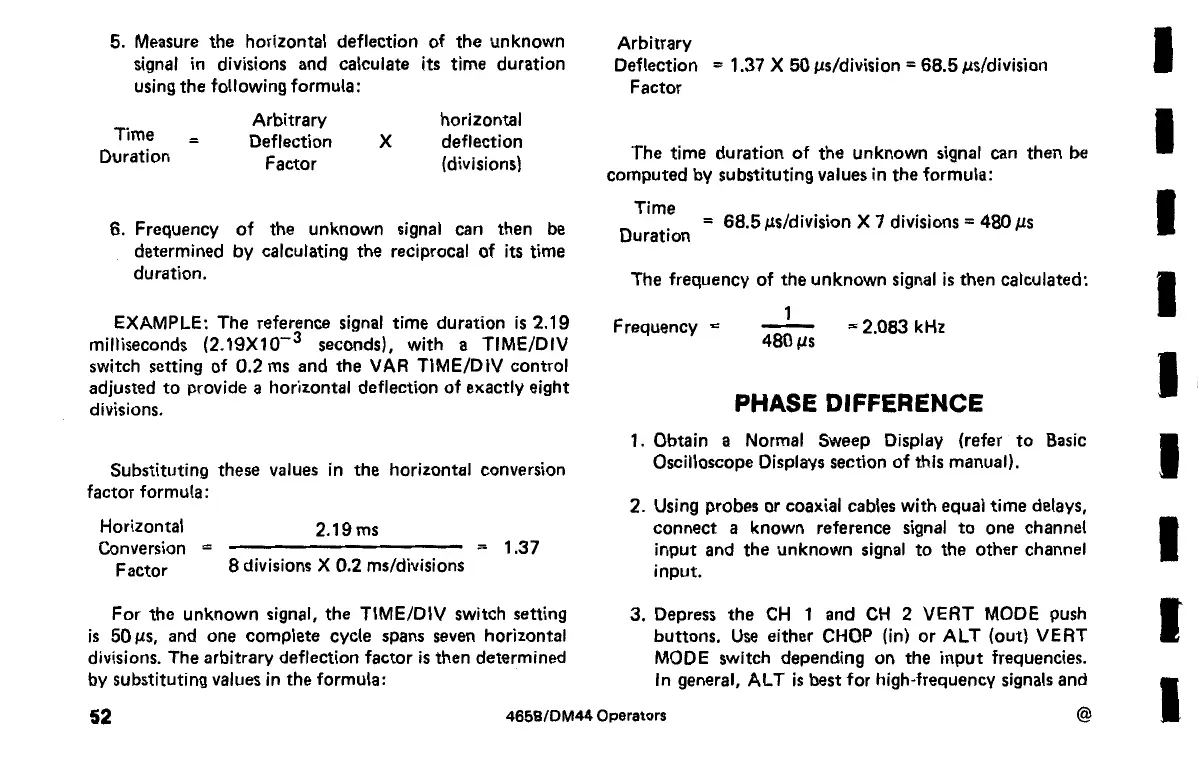